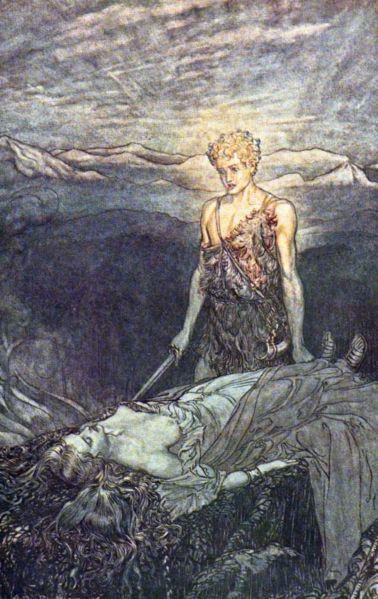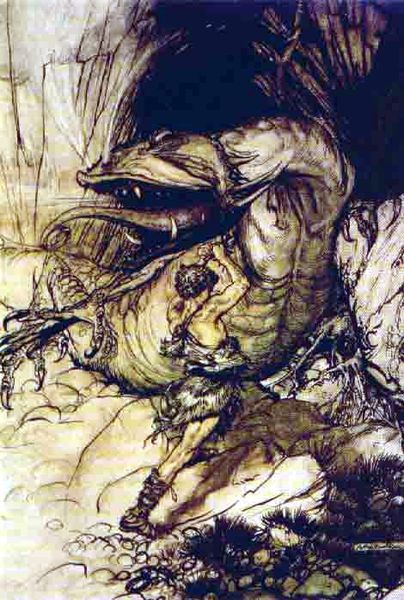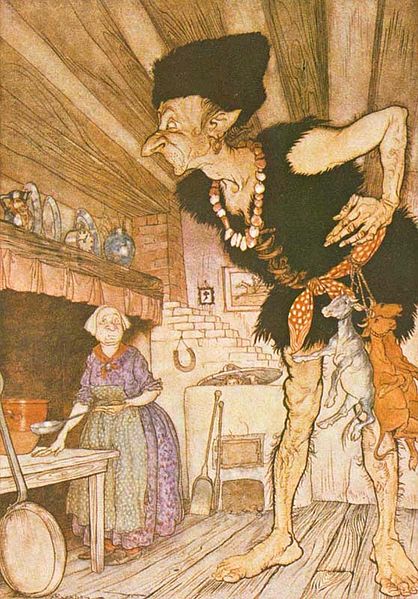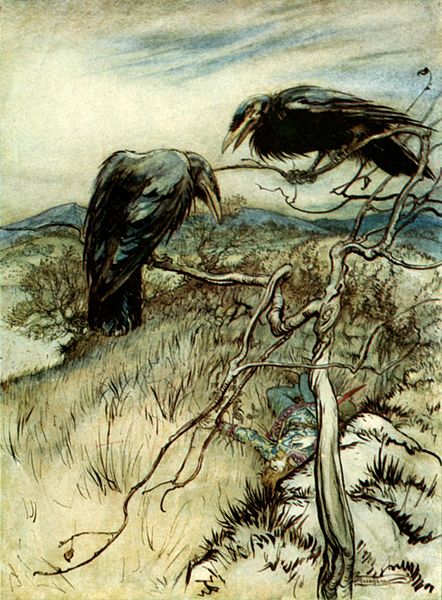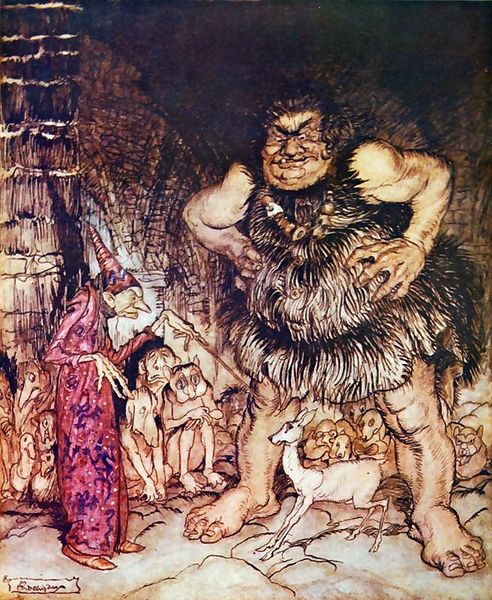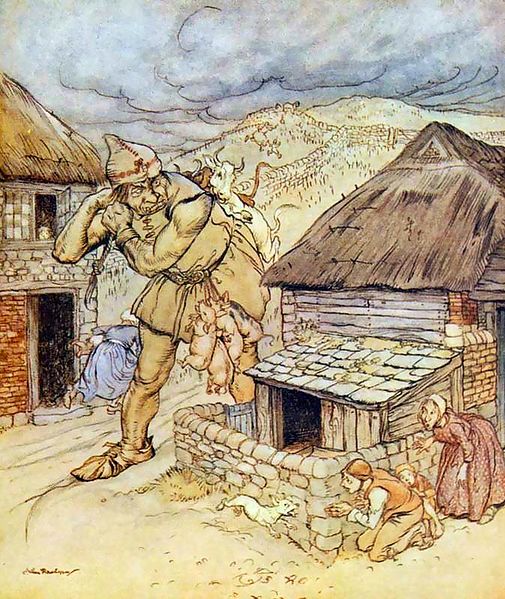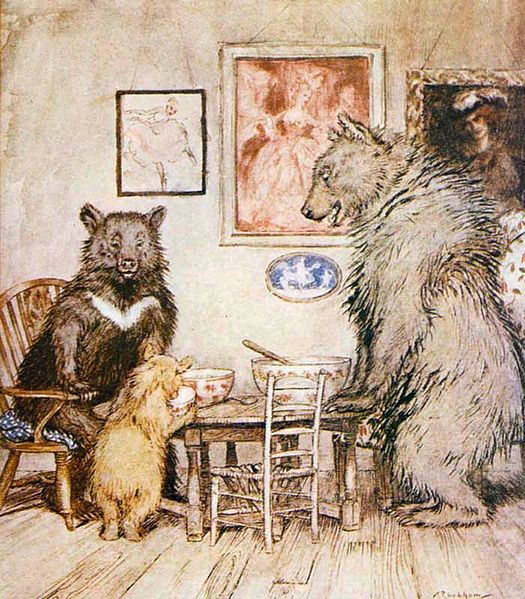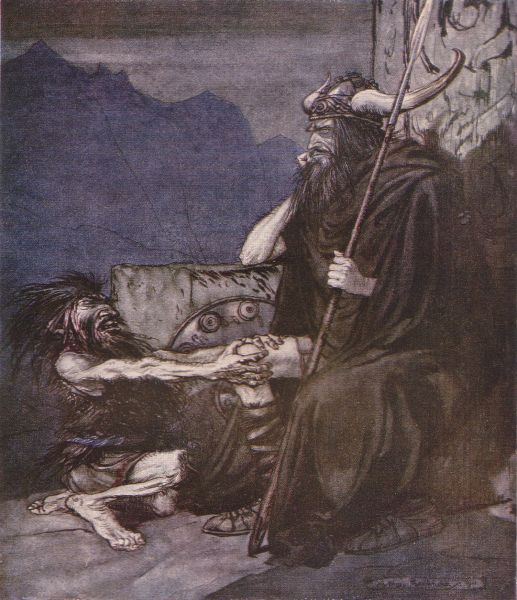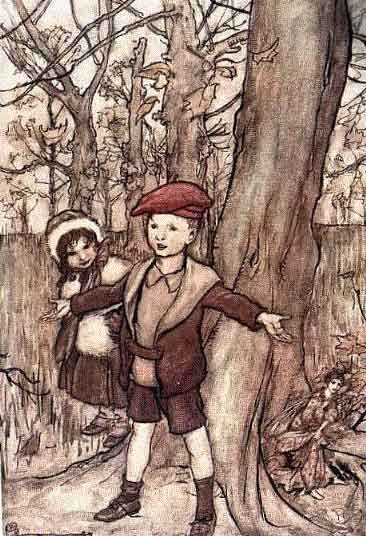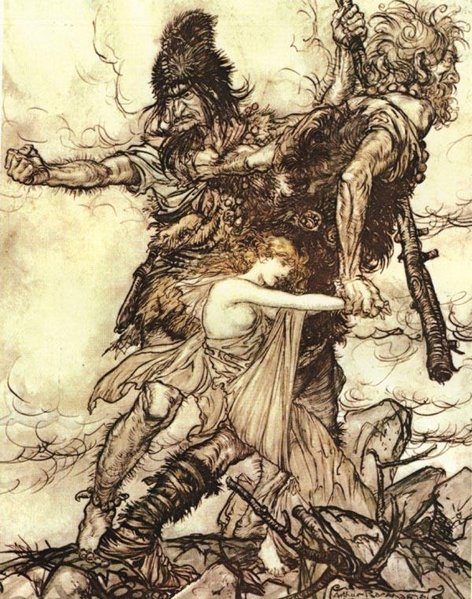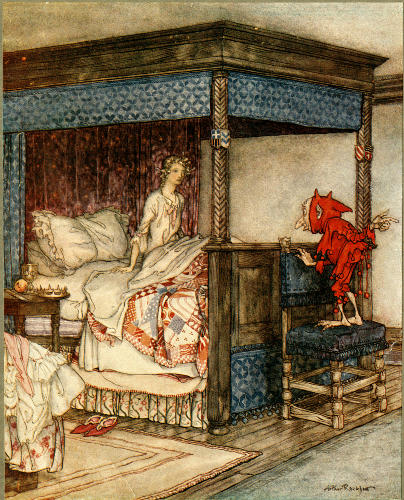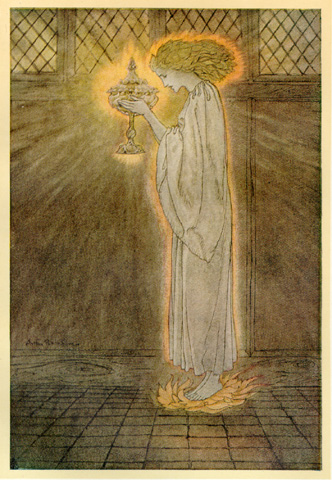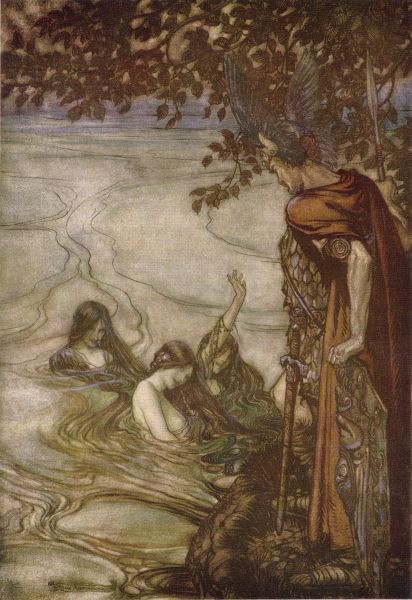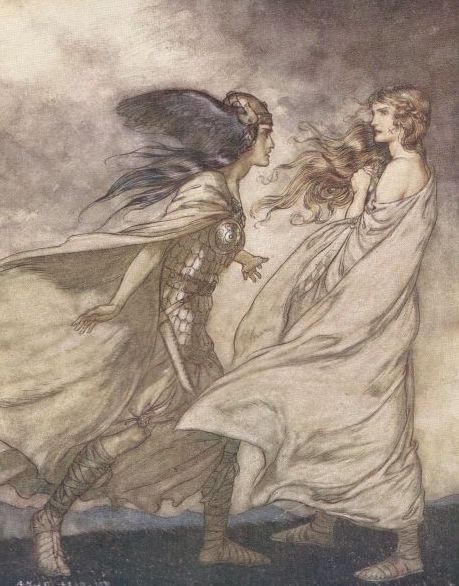<Back to Index>
- Zoologist Fritz Richard Schaudinn, 1871
- Illustrator Arthur Rackham, 1867
- De Facto Ruler of Florence Piero di Cosimo de' Medici (il Gottoso), 1416
PAGE SPONSOR
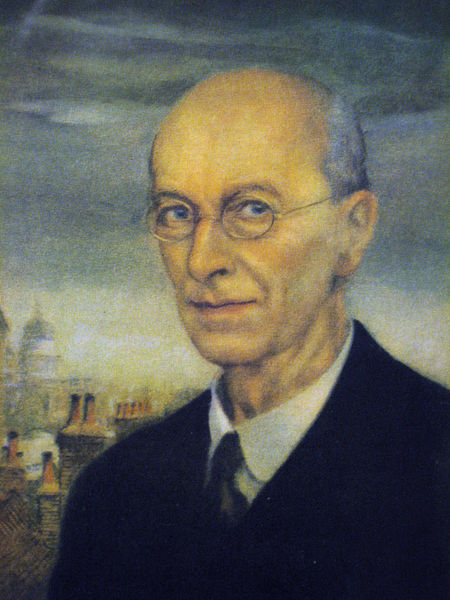
Arthur Rackham (19 September 1867 – 6 September 1939) was an English book illustrator.
Rackham was born in London as one of 12 children. At the age of 18, he worked as a clerk at the Westminster Fire Office and began studying part time at the Lambeth School of Art.
In 1892 he left his job and started working for The Westminster Budget as a reporter and illustrator. His first book illustrations were published in 1893 in To the Other Side by Thomas Rhodes, but his first serious commission was in 1894 for The Dolly Dialogues, the collected sketches of Anthony Hope, who later went on to write The Prisoner of Zenda. Book illustrating then became Rackham's career for the rest of his life.
In 1903 he married Edyth Starkie, with whom he had one
daughter, Barbara, in 1908. Rackham won a gold medal
at the Milan International
Exhibition in
1906 and another one at the Barcelona International
Exposition in
1912. His works were included in numerous exhibitions,
including one at the Louvre in Paris
in 1914. Arthur Rackham died in 1939 of cancer in his
home in Limpsfield, Surrey.
Rackham invented his own unique technique which resembled photographic reproduction; he would first sketch an outline of his drawing, then lightly block in shapes and details. Afterwards he would add lines in pen and India ink, removing the pencil traces after it had dried. With color pictures, he would then apply multiple washes of color until transparent tints were created. He would also go on to expand the use of silhouette cuts in illustration work.
Typically, Rackham contributed both colour and monotone illustrations towards the works incorporating his images - and in the case of Hawthorne's Wonder Book, he also provided a number of part - coloured block images similar in style to Meiji era Japanese woodblocks.
In one of the featurettes on
the DVD of Pan's Labyrinth,
and in the commentary track for Hellboy, director Guillermo Del
Toro
cites Rackham as an influence on the design
of "The Faun" of Pan's Labyrinth. He liked the
dark tone of Rackham's gritty realistic drawings
and had decided to incorporate this into the film.
In Hellboy,
the design of the tree growing out of the altar in
the ruined abbey off the coast of Scotland where
Hellboy was brought over, is actually referred to
as a "Rackham tree" by the director.
